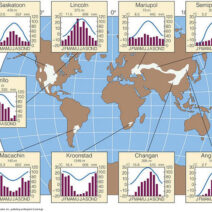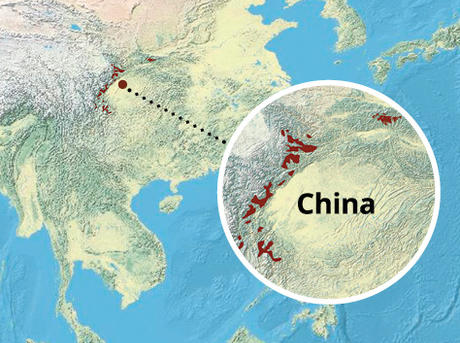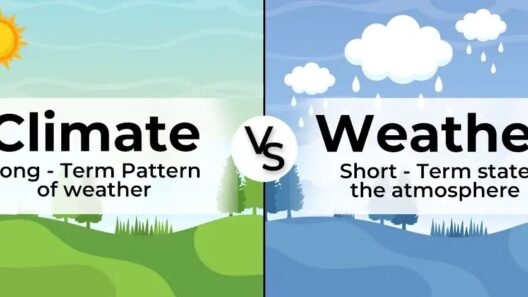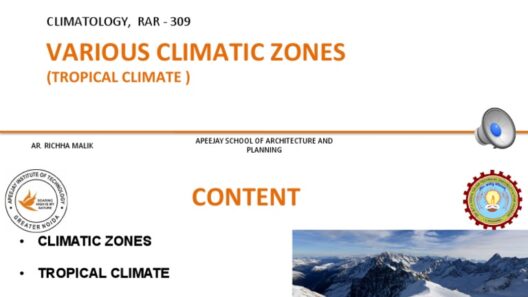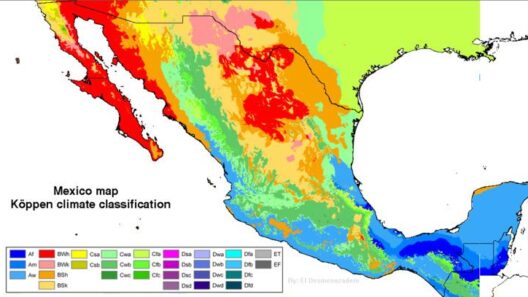Giant pandas, emblematic icons of wildlife conservation, are nestled within the lush bamboo forests of China. Their large, round faces and distinct black-and-white markings evoke a sense of endearment and admiration. However, beyond their captivating appearance lies a dire reality shaped by climatic intricacies. The question arises: what climate do giant pandas truly need to thrive? This inquiry unravels the layers of complexity within the “Panda Paradox,” wherein these illustrious creatures serve as barometers for the health of their ecosystem, emphasizing the profundity of the relationship between climate, habitat, and species survival.
At the heart of this discussion lies the giant panda’s unique dietary preferences, which predominantly consist of bamboo. A staggering 99% of a panda’s diet is bamboo, demanding them to consume between 20 to 40 pounds daily to sustain their energy requirements. This reliance on a single food source renders pandas exceedingly susceptible to environmental changes, particularly those induced by climate fluctuations. As temperatures rise and precipitation patterns shift due to global warming, understanding the intricate balance of habitat conditions becomes paramount.
To fully grasp the climatic requisites of giant pandas, one must comprehend the diverse ecosystems they inhabit. These enigmatic creatures primarily reside in temperate rainforests at elevations ranging from 5,000 to 10,000 feet. The climatic conditions in these regions are marked by cool, moist environments where abundant bamboo thrives. Therefore, the pandas exhibit an intricate relationship with their habitat, which illustrates a widening gap between their needs and the changing world around them.
Climate models predict significant alteration in the distribution of bamboo species as global temperatures continue to ascend. Some studies indicate that nearly one-third of current bamboo habitats could become unsuitable for panda habitation within the next century if the climate trends remain unmitigated. This projection poses a severe threat not only to the pandas but also to their broader ecosystems. The potential fragmentation of habitats further complicates their survival, as isolated populations become increasingly vulnerable to inbreeding and genetic dilution.
Interestingly, giant pandas have evolved to thrive in specific microclimates—cozy niches within larger ecosystems. These microclimates are often characterized by rich biodiversity beyond bamboo, providing a myriad of resources essential for their overall well-being. As climate change metamorphoses these habitats, the delicate balance that has evolved over millennia becomes jeopardized. The question emerges: can giant pandas adapt to shifting climatic realities, or will their reliance on bamboo and specific environmental parameters create an insurmountable barrier to their survival?
While the challenges are daunting, initiatives aimed at preserving and restoring giant panda habitats play a critical role in enhancing their resilience to climate change. The establishment of more than sixty nature reserves across China has facilitated the protection of essential habitats, fostering a greater chance for bamboo forests to thrive. These conservation efforts not only bolster panda populations but also aim to create corridors to link fragmented habitats, allowing for genetic diversity and a better chance of adaptation.
Furthermore, an integrated approach towards conservation underscores the interdependence of species within a particular ecosystem. The conservation of giant pandas fosters the safeguarding of numerous plant and animal species that inhabit the same forests. These multifaceted ecological systems, abundant in biodiversity, also play an indispensable role in regulating local climates. As such, preserving the habitats of giant pandas translates to the conservation of entire ecosystems, propelling efforts towards combating climate change.
However, conservation efforts alone cannot counter the broader implications of climate change on a planetary scale. Global climate initiatives must be invigorated and diversified, targeting emissions reductions and promoting sustainable practices. The circular relationship between climate action and the survival of iconic species, as expressed through the plight of the giant panda, prompts a collective responsibility. It is a call for action that beckons societies to engage in profound discussions regarding environmental stewardship, sustainable development, and climate justice.
In this context, the “Panda Paradox” serves as a poignant metaphorical lens through which we can evaluate human impacts on the environment. Observing the plight of the giant panda should stir a deeper interest in the interconnectedness of species and the delicate tapestry of ecosystems. The preservation of the giant panda is not merely an effort to ensure a charismatic megafauna within our world; it reflects an intrinsic duty to prioritize the integrity of our planet’s ecological framework.
The narrative surrounding giant pandas invites us to contemplate broader questions about conservation ethics and climate resilience. As the global climate crisis intensifies, it is imperative that we seek innovative solutions that marry ecological preservation with social responsibility. Embracing the “Panda Paradox” not only sheds light on the perils faced by a vulnerable species but also compels humanity to confront its relationship with nature. In doing so, we may discover pathways to cultivate a sustainable future—one in which the giant panda, and countless other species, can thrive.
In conclusion, the climatic requirements for giant pandas signify more than mere biological necessities; they unveil a compelling narrative about our relationship with the environment. Understanding the complexities of the “Panda Paradox” demands an urgent and persistent commitment to foster climate resilience and robust ecosystems. Together, we can explore solutions that honor the delicate coexistence of all species, ensuring that the haunting cries of the giant panda echo through thriving bamboo forests for generations to come.
